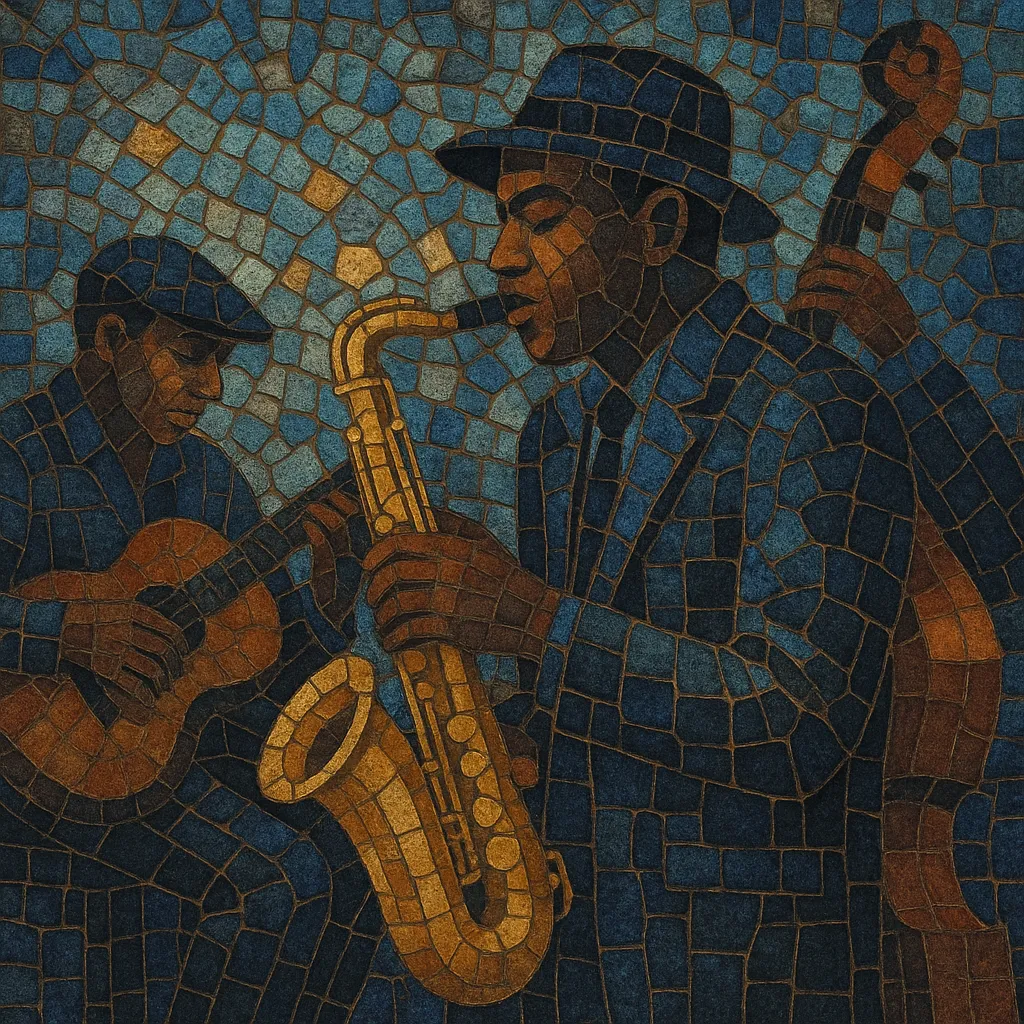
Jazz blues is a hybrid idiom that merges the expressive, melodic language and 12‑bar song forms of the blues with the harmony, improvisational vocabulary, and rhythmic feel of jazz.
Typically, it retains a blues structure (often the 12‑bar form) while enriching it with jazz devices such as ii–V progressions, secondary dominants, turnarounds, tritone substitutions, and extended chords (9ths, 11ths, 13ths). The feel commonly swings, with walking bass lines, comping on piano or guitar, blue notes, call‑and‑response phrasing, and solos that mix blues scales with mixolydian and bebop lines.
The result ranges from earthy shuffles to urbane, harmonically sophisticated vehicles for improvisation, sitting comfortably between New Orleans roots, Kansas City riff traditions, and modern bop language.
Jazz blues took shape in the United States as early jazz musicians adapted rural and classic blues into small‑group jazz settings. Early New Orleans and Chicago bands (including Louis Armstrong’s Hot Five/Seven) played blues forms with collective improvisation, introducing swing feel, walking bass, and richer harmony than typical country or classic blues.
During the swing era, the 12‑bar blues became a central framework for big bands and small combos alike. Kansas City bands (Count Basie, Lester Young) popularized riff‑based blues arrangements: head melodies, call‑and‑response horn figures, and space for solos over urbane, piano‑driven rhythm sections. This period crystallized the "jazz blues" palette—simple forms enriched with jazz rhythm, voicings, and ensemble writing.
Beboppers transformed the blues into a sophisticated improvisational platform. Musicians like Charlie Parker and Thelonious Monk introduced ii–V chains, substitutions, and complex turnarounds (e.g., "Blues for Alice" changes). Miles Davis and John Coltrane explored modal and cool approaches to blues ("All Blues," "Mr. P.C."), while guitarists like Wes Montgomery and Grant Green fused soulful phrasing with advanced harmony, bridging to soul jazz and hard bop.
Jazz blues remains a core language for jam sessions, pedagogy, and performance. It underpins hard bop, soul jazz, and even jazz fusion, while continuing to inform modern jazz practice—from organ trios and guitar quartets to contemporary big bands. Its durable mix of emotional directness and harmonic depth keeps it central to jazz repertoire and improvisation training.

